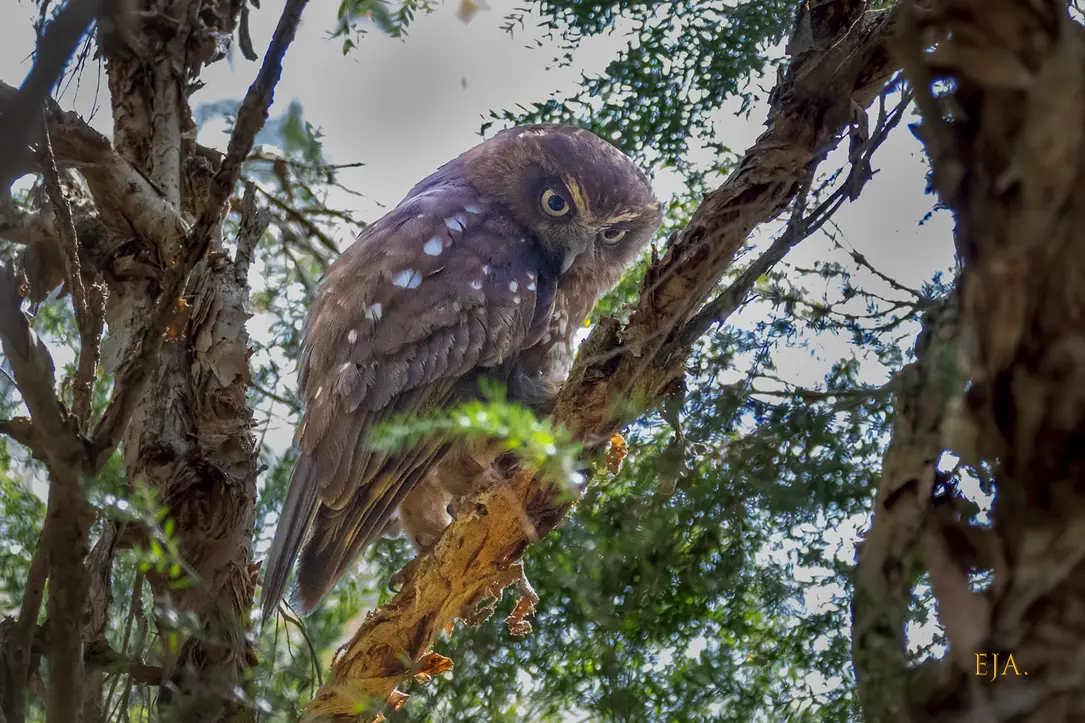From John Abbott
Burram Heads, Queensland
This owl seems to have had a ton of names over the years. From. Wikipedia :
Australian boobook has been designated the official name by the International Ornithological Committee, changed from “southern boobook” in 2019 with the separation of some Indonesian subspecies. The common name comes from the two-tone call of the bird, and has also been transcribed as “mopoke”. William Dawes recorded the name bōkbōk “an owl” in 1790 or 1791, in his transcription of the Dharug language, and English explorer George Caley had recorded the native name as buck-buck during the earliest days of the colony, reporting that early settlers had called it cuckoo owl as its call was reminiscent of the common cuckoo. He added, “The settlers in New South Wales are led away by the idea that everything is the reverse in that country to what it is in England; and the Cuckoo, as they call this bird, singing by night, is one of the instances they point out.” Gould recorded local aboriginal names: Goor-goor-da (Western Australia), Mel-in-de-ye (Port Essington), and Koor-koo (South Australia). Alternative common names include spotted owl and brown owl. The Ngarluma people of the western Pilbara knew it as gurrgumarlu. In the Yuwaaliyaay dialect of the Gamilaraay language of southeastern Australia, the Australian boobook is guurrguurr.
Dutch naturalist Gerlof Mees and German evolutionary biologist Ernst Mayr regarded the taxonomy of the boobook owl complex as extremely challenging,[18] the latter remarking in 1943 that it was “one of the most difficult problems I have ever encountered”.



